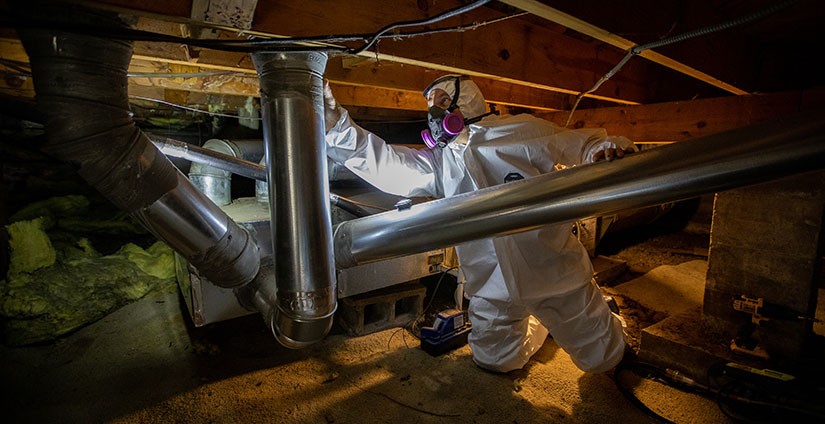Award-Winning NREL Buildings Project Bolstered by Team's Passion for Clean Energy
Teamwork Helps Home Energy Score Tool Deliver Home Efficiency Into the Hands of Consumers

Wonderful family memories of swimming in the local rivers of Zhejiang in eastern China led a young Yueyue Zhou toward a career in architecture and creating beautiful landscapes. But experiencing the effects of climate change firsthand and watching those rivers become polluted is what drove her to the National Renewable Energy Laboratory (NREL).
"I felt the climate change and heavy pollution in my hometown, which made me concerned about greenhouse gas emissions and unsustainability," Zhou said. "Rather than building beautiful architecture, I thought building clean and sustainable architecture would be more important, and I decided to pursue my career in that direction."
Making the world a better place is the collective passion she shares with fellow NREL Residential Buildings Research Group scientists Noel Merket, Ben Park, and Scott Horowitz. The team recently earned the 2022 National Impact Award from the Federal Laboratory Consortium for leadership in modernizing the Home Energy Score™.
Horowitz also sees the effects of their research on a larger scale.
"My career in building energy efficiency was motivated by trying to direct my software development and engineering skills toward a positive outcome for society and the planet," Horowitz said. "Buildings have an enormous impact on emissions nationwide. Yet, building energy efficiency is often overlooked and underappreciated as a cost-effective solution, especially compared to renewable energy, electric vehicles, and batteries."
Funded by the U.S. Department of Energy's Building Technologies Office, Home Energy Score is an easy-to-use, web-based tool that captures information like square footage, number of rooms, and heating/cooling systems to generate a customized 1–10 rating of home energy efficiency (with 10 being most efficient). The result provides information homeowners, buyers, and renters need to understand how efficient a home is and how it compares to others.
As NREL's Home Energy Score project lead, Merket said the tool launched in 2012 and became the first national method allowing all U.S. regions to opt into a simplified and standardized energy assessment process that complements existing advanced home energy audit methods.
"What I like about this project and keeps me going is the potential effect it has. This tool helps educate and guide the public, increases home improvements through strategy and incentives, and provides essential housing data to the real estate market," Merket said. "So far, hundreds of thousands of real people are using the information to make informed decisions about upgrading their homes—getting more value for the energy efficiency they've invested in, unlocking financing for energy efficiency, reducing their energy bills, and ultimately reducing carbon emissions at scale."
Merket said part of the lure of joining research projects like this is the opportunity to collaborate across the Department of Energy laboratories to create an even greater impact.
In 2021, NREL teamed up with the Pacific Northwest National Laboratory and the Lawrence Berkeley National Laboratory to improve the underlying Home Energy Score modeling with an advanced computer simulation framework to enhance its capabilities. The team also added administrative and reporting features along with user-friendly graphic interfaces.
"Working across labs has brought together a dream team of buildings scientists, software developers, and cloud engineers to make it a reality," Merket said. "It brought perspectives and institutional knowledge to make the whole something better than anything NREL could have done alone."
Megan Plog, Home Energy Score program manager at the Building Technologies Office, said the research and effort the team put into the tool is especially important for addressing the aging national housing market.
"Half of U.S. homes are over 40 years old, meaning they were built before building energy codes existed," she said. "And, as one in five American households report reducing or foregoing necessities such as food and medicine just to pay an energy bill, improving home energy efficiency is important to Americans' quality of life."
Horowitz said improving the quality of life of people nationwide remains their focus as an overall team.
"We're all working on the singular goal of achieving a real-world impact. Home Energy Score combines our best engineering and energy modeling practices," he said.
The project also adapts to numerous government-funded opportunities. The Home Energy Score is used to verify energy savings for incentives in the Infrastructure Investment and Jobs Act revolving loan fund, Fannie Mae and Freddie Mac home energy-efficiency mortgage loan products, the Technical Resource Manual in New York, and U.S. Climate Action Plans, as well as state and local utility assistance programs.
Learn more about the Home Energy Score by watching this short video.
Contact the Department of Energy about the Home Energy Score.
Last Updated May 28, 2025
